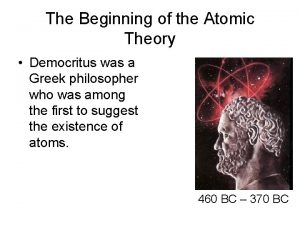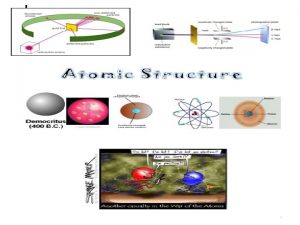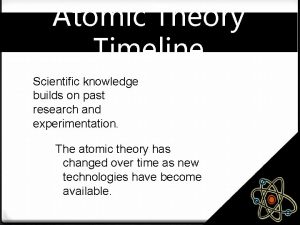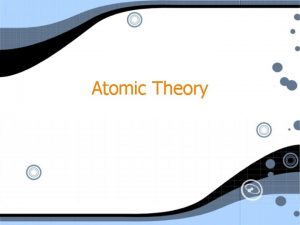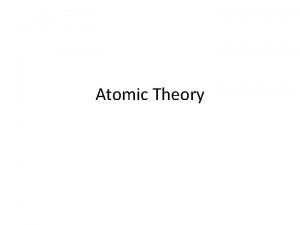What is the Atomic Theory Democritus Dalton 440



- Slides: 3

What is the Atomic Theory? • • Democritus Dalton • 440 B. C. – Thought matter was made of tiny particles – Believed these particles could not be cut into anything smaller pieces – Called these particles atoms, which means not able to be divided • British scientist, 1700’s – Thought atoms were small solid spheres like a marble • Came up with the atomic theory in 1803 – All substances are made of atoms. Atoms cannot be created, divided or destroyed – Atoms of the same element are exactly alike, and atoms of different elements are different – Atoms join with other atoms to make new substances

• J. J. Thomson • 1897 – Made a correction to Dalton’s theory – Discovered that atoms contained negatively charged particles he called electrons – Developed the plum pudding model to show what he thought an atom looked like – Electrons were located throughout the entire atom • Rutherford • 1911 – Revised the atomic theory – Gold Foil experiment – Discovered that atoms have a dense center which he called a nucleus – This center contained positively charged particles he called protons – Electrons surrounded the nucleus with large amounts of space between the nucleus and the electrons

• Bohr • 1913 – Proposed that electrons moved around the nucleus in certain pathways – Known as the solar system model • Electron Cloud Model – Center of atom is very small and very dense, nucleus – In the nucleus are positively charge particles called protons and neutron, particles with no charge – Electrons move around the nucleus in orbits. – These orbits do not have any set pathways – Because the electrons move so fast, they create the illusion of a cloud

